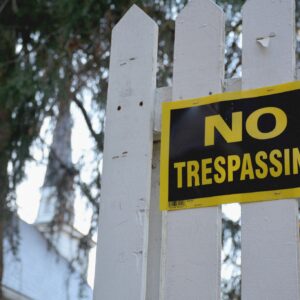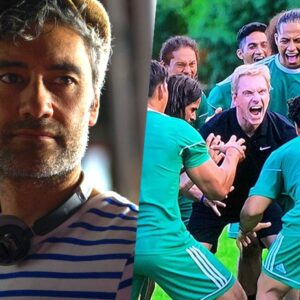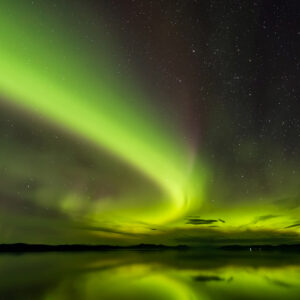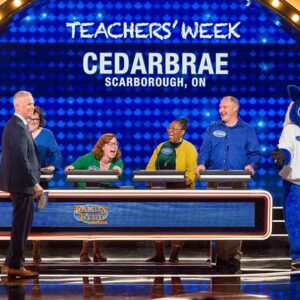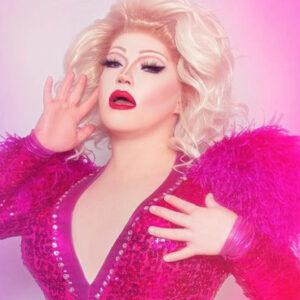
Selena Mills from celebrationofnations.ca
This is a prerecorded Q & A with Tim Johnson leading up to the Celebration of Nations event that took place this past weekend
This autumn marks a commemorative moment in Niagara for Indigenous curated, multidisciplinary arts and historical musicology entertainment. What began as a small exhibit at Music Program at National Museum of The American Indian in Washington, blew up to epic proportions at the N.Y. (Smithsonian) location and continued to expand from there to the recent release of Rezolution Pictures music doc, ‘Rumble, The Indians Who Rocked The World.’
Tim Johnson, Haudenosaunee from Six Nations of the Grand River, co-curator of the RUMBLE: Unity All-Star Jam Session reminisces with us about the history and evolution of Rumble coming back full-circle as the LIVE music extravaganza; concluding The Celebration of Nations: a weekend packed with great Indigenous arts performances and presentations.
The ’Rumble Unity Jam’ on Sept. 10th at the FirstOntario Performing Arts Centre in St. Catharines, Ontario is indeed an incredible concert featuring a line-up of talented, award winning musicians such as: Kenny Lee Lewis (Steve Miller Band), Derek Miller (Two Time JUNO Award-winner), Dianne Steinberg (Star of Sgt. Pepper’s Lonely Hearts Club Band), Peter Shea (Niagara Jazz Festival), Ritchie Franzen (The Linda’s), and Special Guests Harrison Kennedy (JUNO Award-winner and Chairmen of the Board), and Charly Lowry (NAMA Award-winner and American Idol). That’s an impressive show you’ve curated!
And yet, there are strong roots at play here, specifically when it comes to the word, or term: RUMBLE, a song originally Recorded by Link Wray (Shawnee, Native American) & His Ray Men in 1958. There’s a story of multiple arts projects and collaborative inspiration that has emerged. Tell us about that story beginning with the Smithsonian Institution exhibit, “Up Where We Belong: Native Musicians In Popular Culture,” shaped and directed by yourself and Stevie Salas.
“At the National Museum of the American Indian, I was already programming everything from blues, to concerts featuring classical music composers. I wanted to jazz things up a bit, which resulted in collaborating with Stevie (Salas) over a period of a couple of years. The exhibit grew out of that. We identified several core musicians who helped shape blues, jazz, rock, folk, heavy metal: that was Phase One. It was showcased as an exhibit in our Washington DC location as a small offering and it became extremely popular! We realized we had hit on a theme that resonated with many people, and that’s how we expanded to the New York’s museum facility. It really blew up. People would spend hours in the NY exhibit.”
Let’s talk about the award winning documentary, ’Rumble, The Indians Who Rocked the World.’ How did the opportunity to dig into that amazing film project transpire?
“It just evolved because it was so popular. I’d have to say the spark happened when I had assigned one of my researchers, Chris Turner, to take this idea and go with it and come back to me. He spread out all of these other Indigenous musicians and said, ‘Hey, I think you guys are something!’ That’s when I gave it the green light: as an exhibit assessment group. That for me was the seminal moment. That’s when it got resourced. It became a refined idea where we had a moment wherein everything became rooted. We couldn’t let it disappear. We needed to move this out to a larger audience as a documentary: a medium where people could hear the music seamlessly. That was PHASE 2, the doc. Catherine Bainbridge and Alfonso Maiorana did an incredible job with the storytelling and directing. Some of my earlier conversations with them focused on the importance of really digging deep into the stories of these musicians, to trace their indigenous history, their geography, their connection from their music to the land and their communities. The film is more than a rock doc. The lesson of the movie is that you don’t have to create a new Aboriginal Music Genre, it’s already baked into those contributions and the historical landscape of musicology to present day. Mildred Bailey was the first woman of jazz, for example, and numerous artists who followed her patterned the jazz goal stylings after her. Link Wray truly advanced Rock ‘n’ Roll to the next level with the power chord and distortion. You don’t have it unless you have Link Wray.”
For those who don’t know, you’re extending the ticketed PAC show on Sept. 10th with a FREE workshop of the on August 19th in Niagara Falls. These are incredible partnerships between The Niagara Parks Commission, FirstOntario Performing Arts Centre and Celebrations of Nations featuring celebrated award-winning musicians. Who will perform the songs that tell the story of Native contributions to roots, blues, jazz, folk, and rock music genres? Tell me about how you curated both shows as collaboration between Indigenous and non-Indigenous musicians and arts professionals.
“That’s PHASE 3: When I took an interest in advancing contemporary Indigenous music it was on that ultimate level: LIVE performance. It turns out we had to go back in history to understand the foundations of Indigenous artistic contributions to music so that we could then come forward to present day and showcase it in a way that has context. We end up back where we started which was with Live Performance. The Unity All Star Jam Session is to tell the story while interviewing Indigenous musicians which means we’re not locked into collaborating with only Indigenous musicians. But they have to be committed to showcasing Indigenous music and history and culture. In the circles that we travel, non-Indigenous artists are hip to the history and they really appreciate it and respect how they have been inspired and influenced by Indigenous musicians. There is this thing in the Native music circle, there is this distinguishing characteristic as an Indigenous musician, that is: giving back to community, being responsible to our communities, and motivating and inspiring our communities. This is the example we set. However, two-time JUNO Award winner Derek Miller has been key in the evolution of Rumble as a fellow Indigenous arts professional. He and I produced an album called, ‘Rumble – A Tribute to Native American Icons.’ The music that Derek arranged for that is gonna form the core of the concert and that album focused on some of the songs that we featured in the exhibition and subsequently the film, coming back full-circle – four directions style.
As for the free workshop of the show at The Falls, expect some surprises, not all of the artists will be the same as the ones on the bill for the PAC show on Sept. 10th! It’s all an experiment, and it’s all a workshop, really. Looking to identify both the artists and the songs that bring us deeper into the stories. There will be a mix of covers and originals that tells those stories and we’ve tried to stay local; part of this is about promoting and supporting regional/local talent!”
In our current era of reconciliation this and reconciliation that, what do you think of the phrase, reconciliACTION … and does it tie into your own personal/professional direction as a visionary and who you collaborate with?
I would agree with that. One of the reasons that we’re doing Celebrations of Nations (founded by Michelle Lise Burnett), came from looking at our own Nations and wanting to develop a program that not only entertains but educates and enlightens people about the Indigenous experience in Canada. That became our collective goal in developing the programming for the festival. The work that I’m doing on these heritage projects; the work I do IS reconciliation IN ACTION. I’ve been involved in these types of collaborations and partnership projects for years, with credited Native professionals and other non-Native local parliamentary professionals. When the Landscape of Nations Commemorative Memorial project began; it was an, ‘us and them’ sort of thing. By the time we were done with the project, we all shared the same values and had the same goals and aspirations for the project. It took SEVEN YEARS and somewhere along the way it unified. My focus since leaving the Smithsonian has been to focus on heritage products with lasting value related to my Haudenosaunee culture. Everything I do is related to history, culture and art.”


